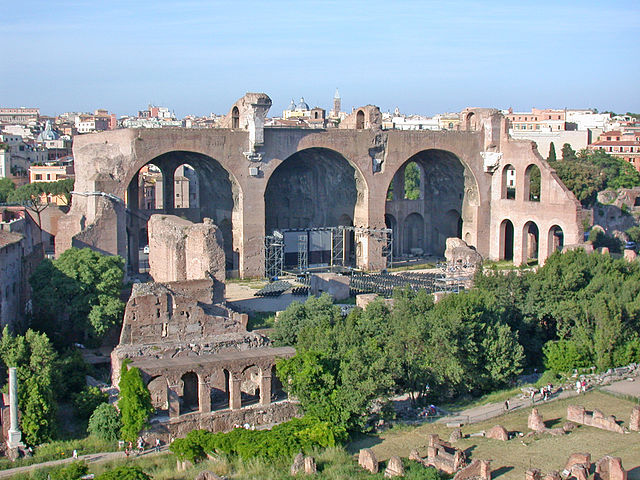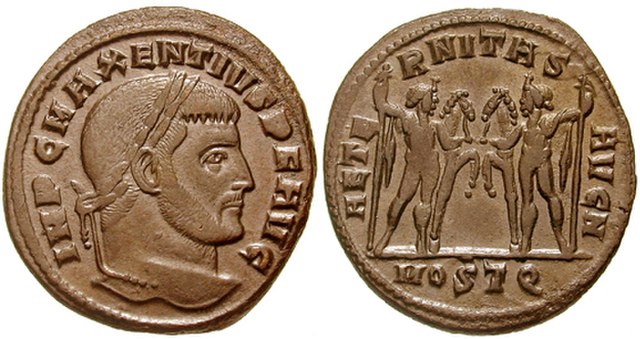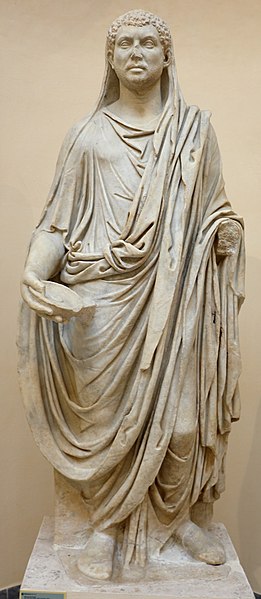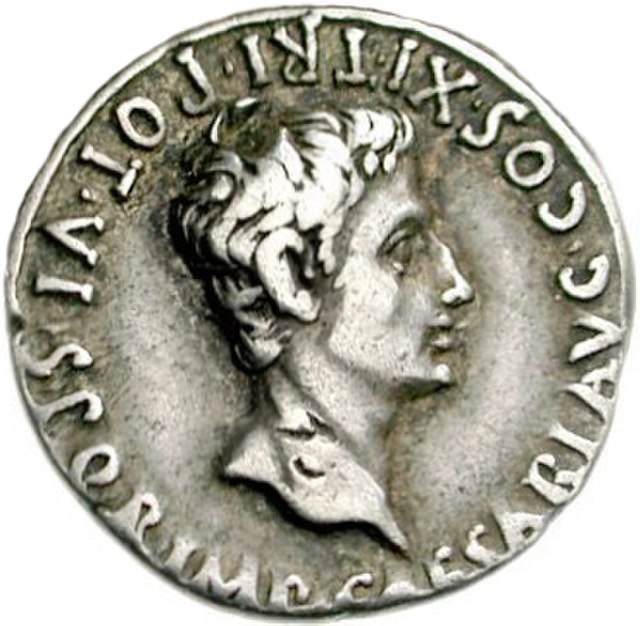Marcus Aurelius Valerius Maxentius was a Roman emperor from 306 until his death in 312. Despite ruling in Italy and North Africa, and having the recognition of the Senate in Rome, he was not recognized as a legitimate emperor by his fellow emperors.
Bust, Staatliche Kunstsammlungen Dresden
The Basilica of Maxentius in the Roman Forum. Completed by his enemy Constantine, it was one of the most impressive edifices of ancient times.
Maxentius as Augustus on a follis. Legend: IMPerator Caesar MAXENTIVS Pius Felix AVGustus / AETERNITAS AUGusti Noster, the Dioscuri standing facing each other, their horses between.- M OST Q (Mint Ostia, officina Q).
Statue in the Museo Ostiense
The Roman emperor was the ruler and monarchical head of state of the Roman Empire, starting with the granting of the title augustus to Octavian in 27 BC. The term "emperor" is a modern convention, and did not exist as such during the Empire. Often when a given Roman is described as becoming emperor in English, it reflects his taking of the title augustus and later basileus. Another title used was imperator, originally a military honorific, and caesar, originally a surname. Early emperors also used the title princeps alongside other Republican titles, notably consul and pontifex maximus.
Bust of Augustus wearing the corona civica
Augustus depicted as a magistrate at the Ny Carlsberg Glyptotek
Cameo of Augustus in a quadriga drawn by tritons at the Kunsthistorisches Museum, Vienna
Denarius of Augustus (18 BC).








